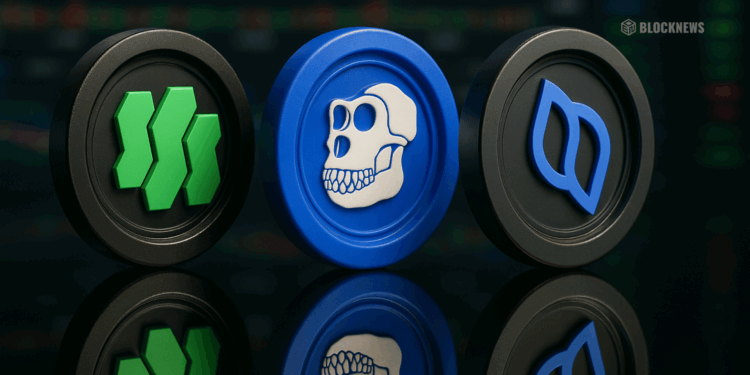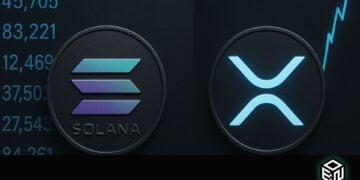- SuperVerse ($SUPER) aims to connect fragmented Web3 games into one scalable network with deflationary mechanics.
- ApeCoin ($APE) leverages Yuga’s brand power and Otherside’s steady rollouts for real metaverse adoption.
- Seedify ($SFUND) acts as the launchpad for the next GameFi hits, with curated pipelines driving demand.
Every bull run does the same thing at first: it shakes loose liquidity, and games wake up. Not just shiny trailers—actual economies, player loops, items you can own and trade. This cycle feels tighter than the last one. Fewer vaporware promises, more teams who’ve shipped before, big brands quietly testing the pipes. If risk keeps sliding down the curve, gaming will be one of the loudest rooms again.
This piece isn’t a parade of tickers. It’s a look at why gaming tends to run in bulls—and which three projects have structures that can turn use into value: SuperVerse (SUPER), ApeCoin (APE), and Seedify (SFUND). Different angles, same target: real demand, not just noise.
Why gaming catches flows when the market heats up
It’s simple: games give crypto a use case people already understand. You play, you earn, you trade. Feedback is fast—updates, seasons, drops—and that velocity shows up in charts quicker than in DeFi or infra. Add creators, guilds, secondary markets… and suddenly you’ve got multiple demand streams pointing at the same tokens. In a bull, that compounding matters.
SuperVerse (SUPER): stitching islands into one playable network
Most Web3 games are islands. New wallet, new token, new marketplace—rinse, repeat, churn. SuperVerse tries to be the bridge instead of another island: a shared spine for games, assets, and communities so players (and value) can move without friction.
The design hinges on two ideas. First, $SUPER sits at the center, so activity across titles rolls up into one economy. Second, the BlackHole mechanism routes a cut of ecosystem fees into buyback-and-burn—so as usage grows, circulating supply shrinks. That’s a DeFi-style sink, wired to play loops rather than just speculation. If integrations keep stacking and onboarding stays sane (fiat ramps, custody, low-friction gas), SUPER doesn’t need a single mega-hit; a handful of solid games could be enough to bend the curve.
What I’m watching: real player retention beyond first-week hype, breadth of partner titles (not just house projects), and whether BlackHole burning tracks organic activity, not wash loops. If those check out, this one has the bones to scale with the cycle.
ApeCoin (APE): brand gravity meets a metaverse that actually ships
Whether you’re into it or not, Yuga still pulls attention. ApeCoin is the currency and governance chip tied to that pull, with Otherside as the flagship. Think persistent world, land, avatars, creator tooling—the usual metaverse promises, except with regular live demos and events that, honestly, look better each quarter.
Here’s the bet: if Otherside turns into a place people return to—concerts, quests, drops, upgrades—then APE demand comes from usage, not just trading. Governance isn’t fluff here either; the DAO funds builders, tools, and cross-ecosystem experiments, sometimes clumsy, sometimes brilliant, but moving. In a bull run, brand + usable rails tends to outrun lesser copycats.
Key tells: cadence of feature releases, creator monetization (do builders get paid?), and in-world sinks that keep APE flowing without turning into a tax. If Yuga keeps shipping, APE remains the easiest metaverse exposure with real liquidity.
Seedify (SFUND): where the next wave lists first
Content wins cycles. Launchpads decide who gets a stage. Seedify is the GameFi incubator that handles the unsexy bits—token design, marketing, distribution—while letting teams focus on, you know, making a game. Stake $SFUND for allocation slots in IGOs and curated NFT sales; the more compelling the pipeline, the tighter the SFUND float gets during hot periods.
The difference versus “spray and pray” platforms is curation. Seedify’s reputation rises or falls on post-launch performance, so it has incentive to filter. In bulls, the first pops often come from new listings; a busy calendar of credible titles can make SFUND a quiet outperformer while everyone else chases yesterday’s candles.
Proof points to track: hit rate after the first month (not day one), anti-sybil fairness on allocations, and whether successful launches keep building (updates, seasons, on-chain activity) instead of vanishing after TGE.
How to separate signal from sizzle (quick, but important)
Don’t overthink it—just ask:
- Are there users you can count (DAU/MAU, repeat spend), or only trailers?
- Do token sinks and sources make sense, or is it endless emissions with a new name?
- Is shipping consistent (patch notes, seasons), or only “coming soon” tweets?
If a project clears those, you’re already avoiding most landmines.
Positioning without turning it into a second job
You don’t need a war room. You need a short list and rules you’ll follow when emotions spike. Keep a core you’ll hold through noise (one or two of the names above if they fit your thesis), a growth bench of a few titles with catalysts, and a tiny venture sleeve for early bets—ideally via a launchpad like Seedify so you’re not guessing in the dark. Pre-write entries, invalidation, and trim ladders. Then let the plan work while you sleep.
Risks don’t vanish in a green market: unlock cliffs hit, clones split attention, app-store policies whipsaw, liquidity fakes look real until they aren’t. Trim into strength; leave some for the next person; don’t round-trip wins because Twitter said “diamond hands.”
Gaming is early-cycle friendly and late-cycle dramatic. SuperVerse aims for network effects, ApeCoin wields brand + worldbuilding, and Seedify sits where the next cohort launches. None of this is set-and-forget. But all three have a way to turn use into token demand if the market does what it usually does in a bull.














